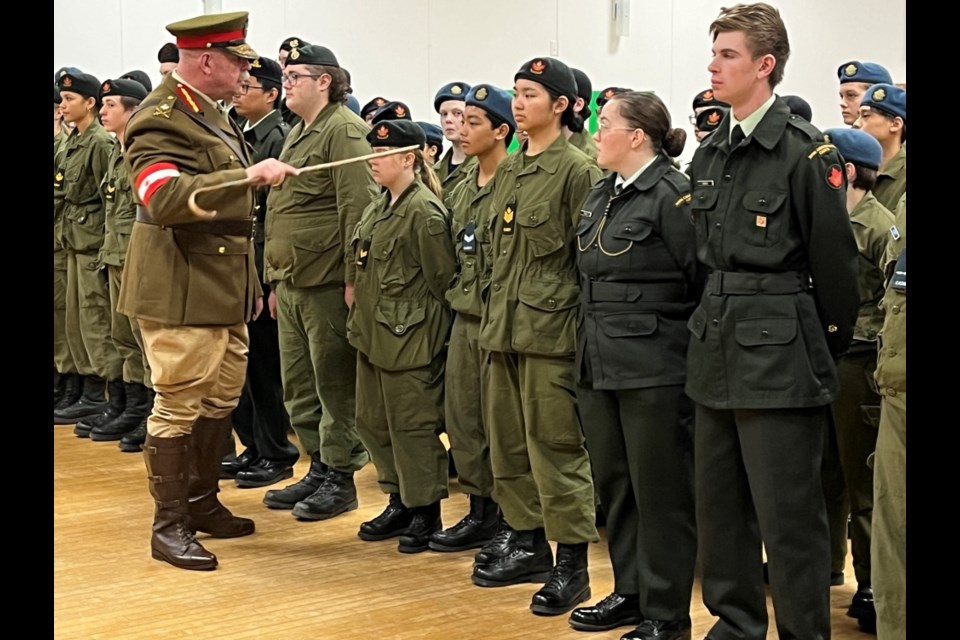ESTEVAN - The history and significance of one of Canada's great military victories was honoured on Saturday during the annual Vimy Remembered ceremonies in Estevan.
This year's events were more interactive than in the past. Craig Bird, a local military historian and the commanding officer of the No. 2901 Estevan Army Cadets, was dressed as the famed Canadian General Arthur Currie, who played an integral role in the battle and was the commander of the Canadian Corps at the end of the First World War.
Local cadets were joined by dozens of their peers from elsewhere in Saskatchewan to learn more about the battle. People from the community were also in attendance.
A presentation at the Estevan branch of the Royal Canadian Legion included a brief video and a speech by Bird. He pointed out that in 1914, Canada was considered part of the British Empire, so when Britain joined the First World War, Canada also went to war.
"By the spring of 1917, Europe had been at war for more than 2 1/2 years, with neither side being able to make significant gains. Germany captured Vimy Ridge early in the war and transformed it into a strong defensive position, with a highly complex system of tunnels and trenches, full of highly-trained soldiers with machine guns and artillery placements," said Bird.
Previous Allied assaults in 1914 and 1915 left the British and French with hundreds of thousands of casualties, Bird said, and were largely unsuccessful. In the spring of 1917, a major attack was planned in France, and as part of it, Canada was tasked with capturing Vimy Ridge.
The battle was the first time all four divisions of the Canadian Corps attacked together.
Technical and tactical innovations used by the Canadians included "very powerful" artillery preparations, meticulous planning and more.
"The Canadians demonstrated they were one of the outstanding formations of the western front and masters of an offensive warfare," said Bird.
Many historians view the battle at Vimy as when Canada emerged from the shadow of Britain to become its own nation, Bird said. The Canadian National Vimy War Memorial was unveiled in 1936 on land donated to Canada by France.
A large topographical map of the area around Vimy Ridge was brought out to teach people at Vimy Remembered about the area and how Canadians dislodged Germans troops. The crowd also watched some slide footage about the trenches and their design.
Bird said he believes the young people enjoyed the changes made to this year's presentation.
After lunch, the attention shifted to Estevan's cenotaph. A couple of wreaths were laid by cadets from Humboldt, and Bird spoke to the youths about the contributions of soldiers from Estevan and the southeast. He noted 18 of the soldiers whose names are on the cenotaph died at Vimy Ridge.
"A lot of the communities in the southeast had people that died in Vimy Ridge. Even the smallest of the communities," said Bird, who urged the cadets to remember the toll of the battle.
Between 25,000 and 30,000 Canadian soldiers participated in Vimy, he said, and nearly 11,000 were killed or injured.
Cadets took time to look at the names on the cenotaph, and to marvel at the neighbouring Estevan Soldier's Tree monument, which was carved by Darren Jones in 2015. They also toured the artifacts in the museum, which is partially located in the legion's small hall.
Bird began hosted the Vimy presentations in 2017 as part of the effort to commemorate the 100th anniversary of the battle.



